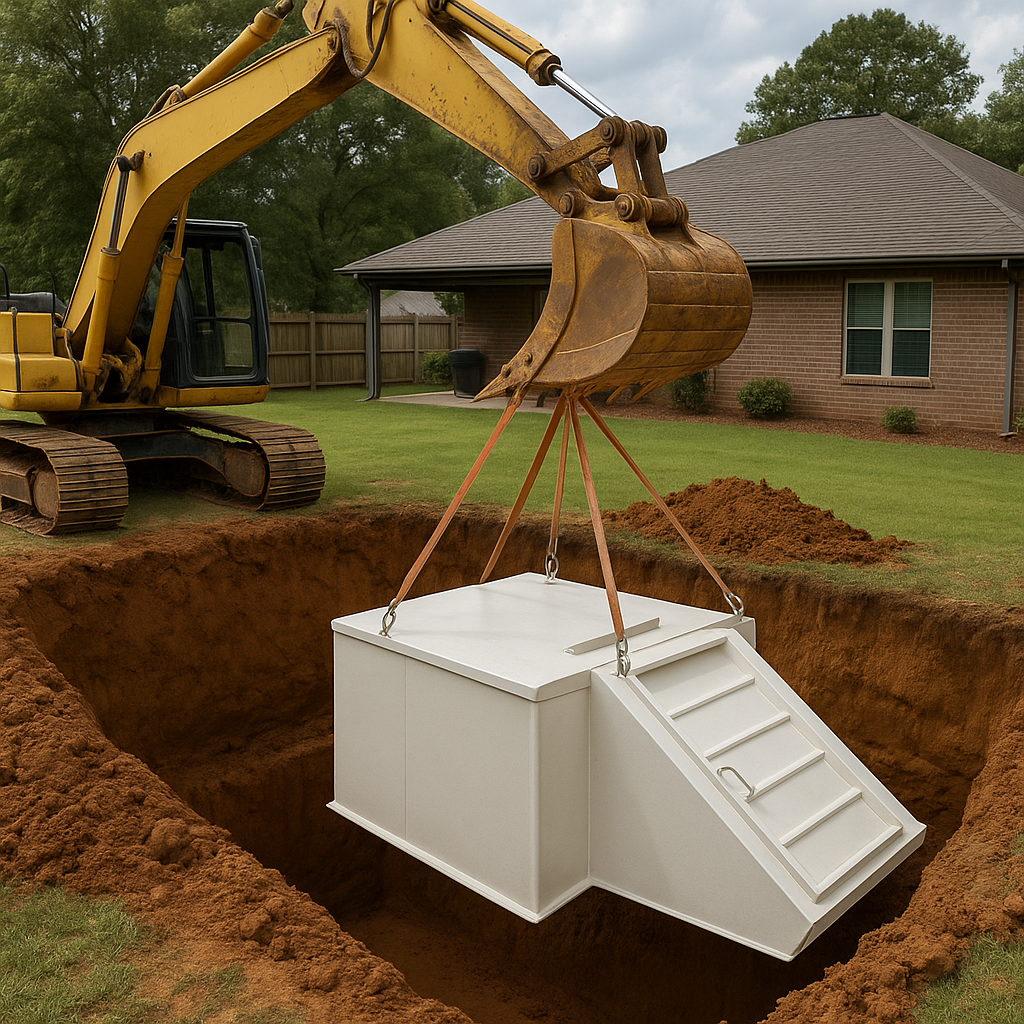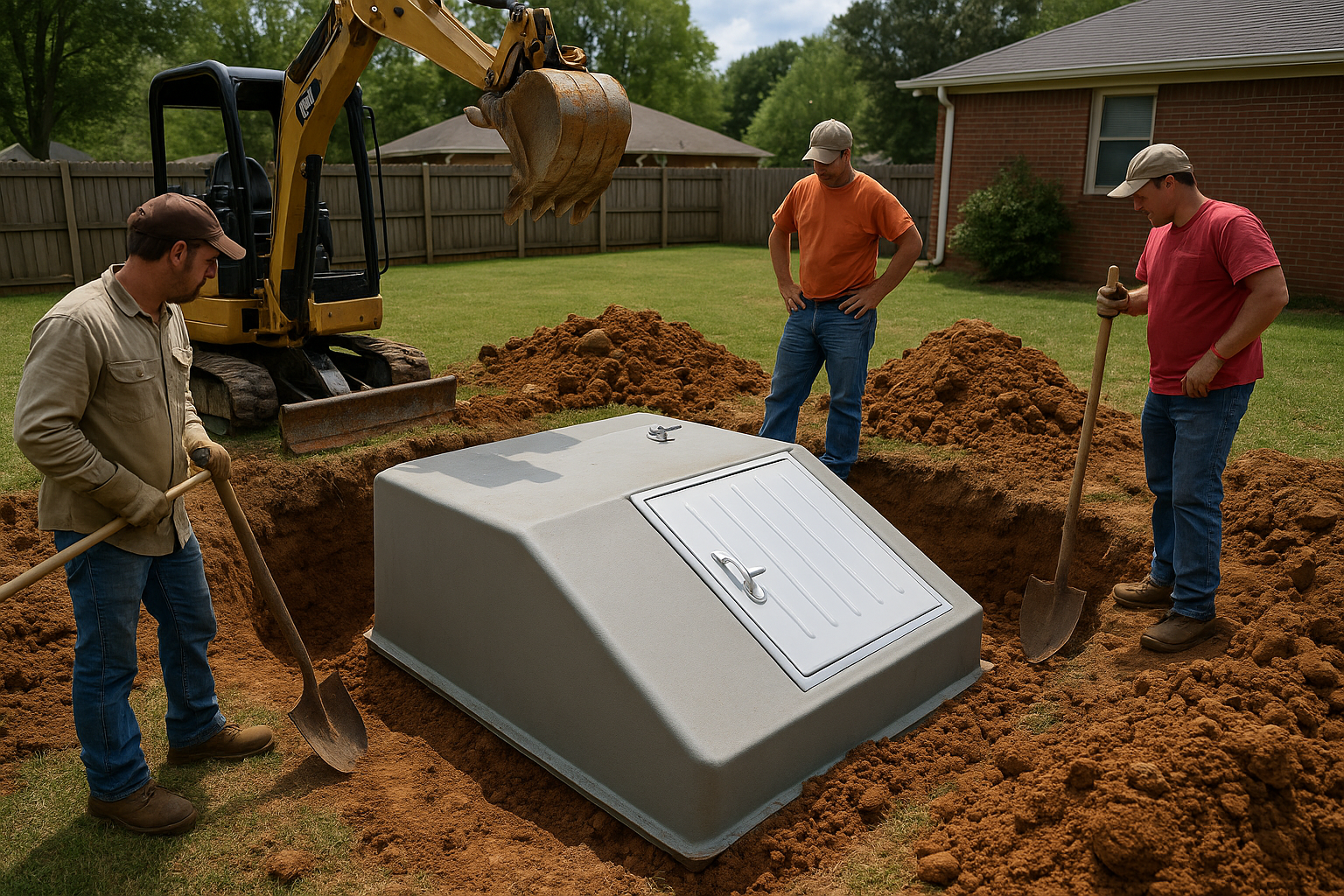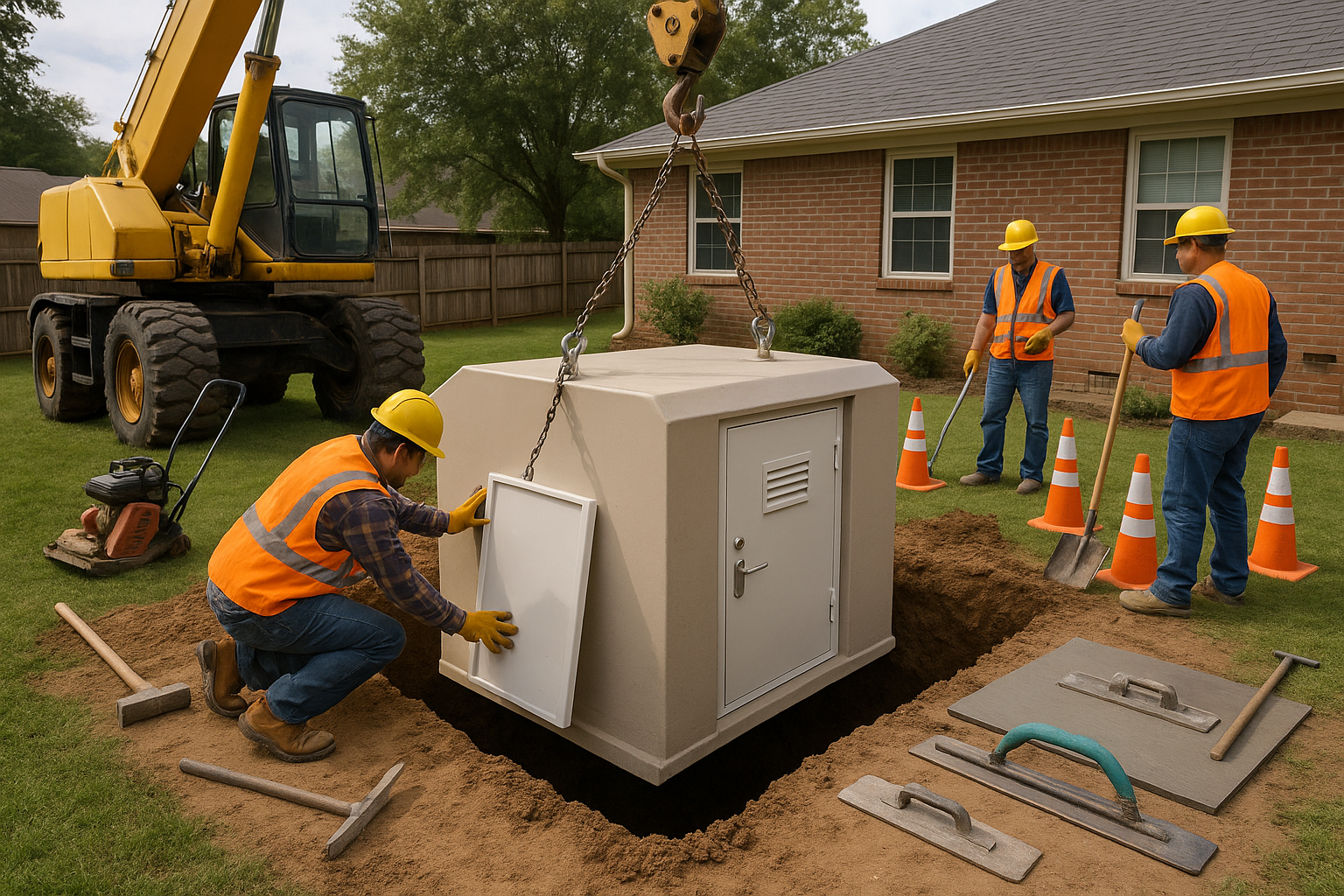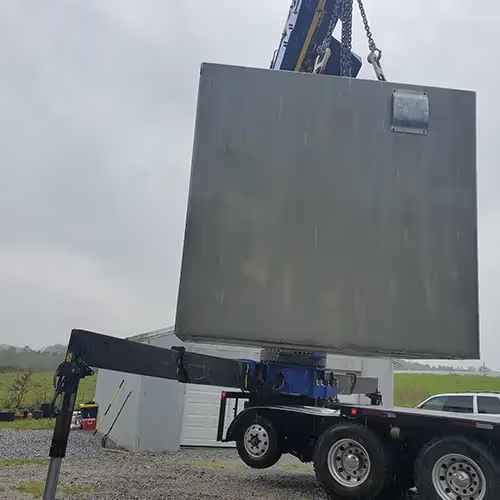Safety Guidelines for Above Ground Tornado Shelters Every Family Should Know

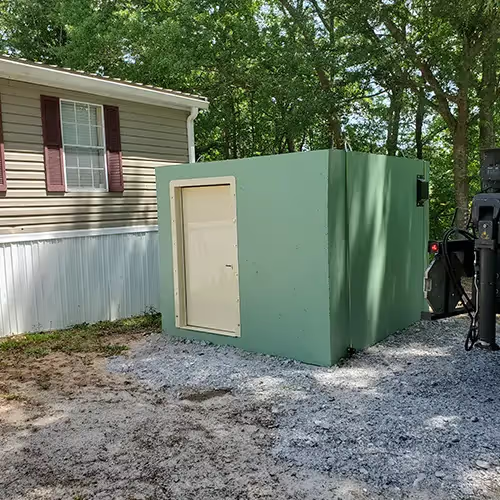
Have you ever wondered if your family would be truly safe during a sudden tornado? Tornadoes can strike with little warning, leaving precious moments to react. Understanding proper tornado protection for families measures could make all the difference when seconds count. Tornado preparedness isn’t just about having a shelter; it’s about knowing the right steps to take before, during, and after a tornado occurs. A proactive approach ensures everyone in your household can react calmly and safely.
In this guide, we focus on above ground tornado shelter safety, explaining what these shelters are, how they function, and how to use tornado shelter systems effectively. Many people assume only underground shelters provide real protection, but with proper family tornado shelter precautions, above ground options are highly reliable. Modern above ground shelters, including concrete storm shelters, are engineered to withstand extreme winds and flying debris, offering accessibility and comfort.
Understanding residential tornado shelter safety goes beyond rules and regulations; it includes preparing a storm shelter emergency plan, knowing entry and exit procedures, and keeping essential supplies ready. By following a tornado shelter safety checklist, families can reduce panic and maximize safety during a tornado. By the end of this article, you’ll know exactly how to prepare, maintain, and use an above ground tornado shelter to protect your loved ones. With careful planning, you’ll gain confidence and peace of mind, ensuring your family remains safe even during the most unexpected severe weather events.
Understanding Above Ground Tornado Shelters
Above ground storm protection systems have evolved significantly over the years. While decades ago most families relied on basements or underground storm cellars, increasing concerns about flooding and urban development prompted engineers to create elevated alternatives that still offer tornado protection for families. Today, these shelters meet strict tornado shelter building standards, ensuring they provide reliable safety while remaining accessible and practical.
An above ground tornado shelter is a reinforced structure built above the surface, often installed in garages, backyards, or even inside a home’s footprint. Following a storm cellar installation guide is critical to ensure proper anchoring, stability, and wind resistance. Modern designs incorporate steel tornado shelter design principles and tornado shelter location planning strategies to optimize safety and accessibility. In addition, proper storm shelter maintenance tips must be followed to keep the shelter fully operational.
Advanced shelters now include a tornado shelter ventilation system to maintain airflow during extended stays, along with compliance with above ground safe room requirements. Using FEMA approved tornado shelters and ensuring proper tornado shelter certification helps guarantee that your structure meets national safety standards. Families can also explore modular storm shelters for flexible installation options. Above ground shelters are a credible, reliable alternative to traditional underground options, offering protection without major excavation or structural compromise.
Key Safety Principles for Using Above Ground Tornado Shelters
Protecting your family during a tornado requires more than just installing a shelter. Knowing how to use tornado shelter systems effectively is essential. Above ground shelters are engineered for strength, but their true value depends on preparation, planning, and understanding fundamental safety principles. These principles ensure the shelter can perform as expected during severe weather.
Structural Integrity – Ensure your shelter meets tornado shelter construction safety codes, is anchored securely, and can withstand high winds and flying debris.
Accessibility – Follow storm shelter accessibility rules to make sure all family members can reach the shelter quickly, even under pressure. Pathways should remain clear at all times, and children should know the fastest routes.
Emergency Supplies – Keep emergency supplies for tornado shelter such as food, water, flashlights, batteries, first-aid kits, and communication devices. Preparedness reduces panic and keeps everyone comfortable.
Ventilation and Lighting – A proper tornado shelter lighting system and tornado shelter ventilation system are vital for safety and comfort during stays.
Safety Drills – Conduct tornado shelter safety drills regularly so every family member knows what to do.
During a tornado, executing tornado emergency response steps quickly, as outlined in your storm shelter emergency plan, can prevent injuries. Practicing these safety steps regularly helps families feel confident and ready, ensuring that family tornado shelter precautions are second nature when severe weather strikes. Families can also review luxury storm shelters to see examples of advanced safety and comfort features.
Why Above Ground Tornado Shelters Are a Smart Choice
Best above ground storm shelters offer a combination of safety, accessibility, and comfort. They are particularly ideal for families seeking tornado preparedness for homes without basements or space for underground shelters. These modern designs maximize protection while fitting seamlessly into various home layouts.
Key Benefits:
- Quick Accessibility: Easy entry reduces risk during tornado warning safety actions, allowing families to reach safety in seconds.
- Flexible Placement: Can be installed indoors, in garages, or small yards, while meeting tornado shelter building permit requirements.
- Certified Safety: Built using tornado shelter materials comparison and tornado shelter safety features, ensuring compliance with national codes. See steel vs fiberglass storm shelters for material insights.
- Low Maintenance: Following storm shelter maintenance tips ensures shelters remain fully functional year-round.
- Comfort and Usability: Proper ventilation, lighting, and storage for emergency supplies for tornado shelter improve safety and peace of mind.
When properly installed, these shelters also meet tornado shelter insurance coverage requirements, giving families additional protection and reassurance. By choosing an above ground tornado shelter, you’re investing in safety, convenience, and long-term peace of mind for everyone in your household.
Understanding the Limitations of Above Ground Tornado Shelters
Even the best tornado shelter locations have limitations. While above ground shelters are engineered for safety, families must understand potential challenges. Cost, space constraints, and extreme weather tolerance are common concerns. Using a tornado shelter cost estimate can help you plan accordingly.
To mitigate these challenges:
- Plan Early: Assess your home’s layout and yard to find the most suitable spot for your shelter.
- Use Certified Designs: Opt for FEMA approved tornado shelters to ensure compliance with safety codes.
- Maintain Regularly: Conduct routine inspections of doors, locks, and the tornado shelter ventilation system to ensure proper function.
- Educate Family Members: Teach tornado safety for children and practice family tornado shelter precautions regularly.
Awareness of these limitations contributes to improved community storm shelter safety, helping neighborhoods plan effectively and maintain preparedness standards. Even with challenges, proactive planning and proper maintenance make above ground tornado shelters a reliable and practical option for families seeking safety and convenience. Families interested in detailed installation tips can consult the storm cellar installation guide.
How to Prepare Your Above Ground Tornado Shelter for Maximum Safety
Proper tornado shelter preparation ensures your family is ready for sudden storms. Taking the time to organize your shelter and plan in advance can make all the difference during emergencies.
Step-by-step Approach:
- Assess Location: Ensure compliance with tornado shelter location planning standards. Choose a level, accessible site with clear paths.
- Inspect Structure: Verify your shelter meets tornado shelter building standards and check all structural components.
- Stock Supplies: Keep emergency supplies for tornado shelter like food, water, flashlights, first-aid kits, and communication devices ready.
- Plan Entry and Exit Routes: Design paths according to tornado shelter entry design principles to ensure rapid access.
- Test Systems: Confirm your tornado shelter lighting system and ventilation function properly.
- Review Plans: Maintain an updated storm shelter emergency plan to guide the family during tornadoes.
Using guidance from the tornado safety awareness guide and local storm shelter regulations ensures you meet all recommended safety standards. Regular checks, proper organization, and family education create a shelter that is both safe and practical for everyday preparedness. Families may also learn from modular storm shelters to see flexible solutions for varying space needs.
The Future of Above Ground Tornado Shelters
Innovations in steel tornado shelter design and tornado shelter materials comparison are creating stronger, smarter shelters. New models include advanced tornado shelter entry design, improved ventilation, and automated lighting systems. These advancements make shelters more user-friendly and resilient during extreme weather.
Emerging community storm shelter safety initiatives are encouraging neighborhood sharing programs and public access shelters. These solutions improve accessibility for all residents while maintaining high safety standards. Additionally, luxury storm shelters demonstrate how comfort and safety can be combined for modern living spaces. Modular, compact designs and eco-friendly materials ensure shelters fit a variety of spaces while remaining sustainable.
By staying informed about these trends, families can plan ahead and adopt shelters that integrate technology, convenience, and durability, enhancing overall tornado preparedness and protection.
Final Thoughts on Above Ground Tornado Shelter Safety
Following a tornado shelter safety checklist, practicing storm shelter maintenance tips, and understanding safe room vs tornado shelter features ensures long-term reliability and safety. Above ground shelters provide not only physical protection but also peace of mind.
Investing in a shelter is a commitment to tornado protection for families and tornado preparedness for homes. Review where to buy tornado shelters, check tornado shelter certification, and update your storm shelter emergency plan today. Every step strengthens your family’s ability to respond confidently during severe weather, making safety a practical, achievable reality.

